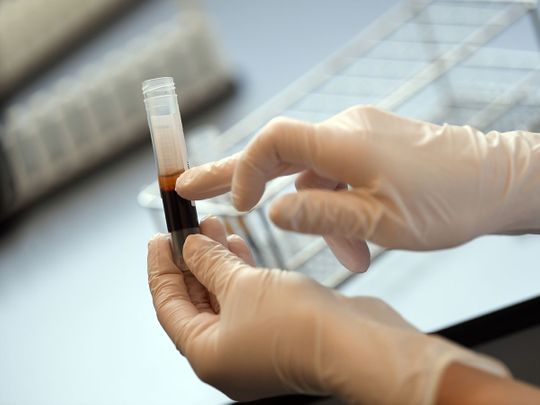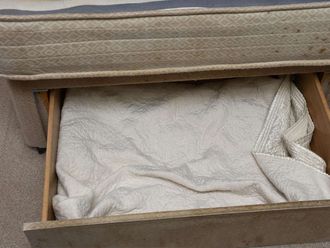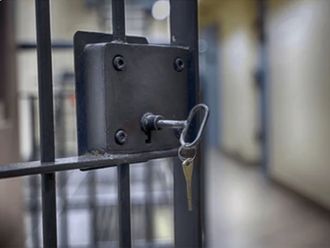
A large study of 20,000 hospitalized covid-19 patients who received transfusions of blood plasma from people who recovered found the treatment was safe and suggests that giving it to people early in the disease may be beneficial.
The treatment, called convalescent plasma, is based on a century-old idea in medicine that has been used against measles, influenza and Ebola. People who recover from an infection have virus-fighting antibodies floating in their blood, and transfusions of their plasma - the clear liquid after blood cells are removed - may give recipients' immune systems an assist in fighting off the virus.
The study, published Thursday in Mayo Clinic Proceedings, is the largest analysis yet of an experimental treatment rapidly deployed in the early weeks of the pandemic through a grass roots effort by physicians. What started as a proposal in a medical journal rapidly drew more than 2,000 medical institutions into a collaborative effort to work out the logistics of collecting and deploying the plasma.
The results are encouraging but also highlight the difficulty of conducting conclusive studies in the midst of a global pandemic - and add to a body of inconclusive and sometimes conflicting evidence about the approach.
"The actionable message here is that this is safe, inexpensive and the mortality rates in sick patients are quite low," said Michael Joyner, an anesthesiologist at the Mayo Clinic who led the study.
But he acknowledged there is a "chicken and egg" conundrum in trying to conclusively determine the effectiveness of the treatment. The patients were given the treatment through an expanded access program created by the Food and Drug Administration, not in a clinical trial in which patients are randomly assigned to receive the treatment or a placebo.
The data, he pointed out, are consistent with the treatment being beneficial. Among the first 5,000 patients who received a plasma transfusion, the death rate in the week after the transfusion was 12%. That first group of patients received transfusions at a time when plasma was often in short supply and was administered to patients late in their illness. In the larger study, the mortality rate fell to less than 9%.
There is no comparison group of patients who did not receive plasma, but the researchers speculate the death rate may have dropped because plasma became more widely available and was given earlier in the disease, which is when doctors think it is more likely to work, based on use in other diseases.
But other factors could also explain that drop in mortality - as the pandemic went on, physicians might have gotten better at treating covid-19 patients, or people with less severe illness may have begun to show up at the hospital and receive the treatment.
"You'd like to have the gold standard [of evidence] in something this important, and I feel like it always ends up here with this approach," said Jeffrey P. Henderson, an infectious-disease specialist at Washington University in St. Louis who has been working on the effort to use plasma. "It's pushed into action quickly, because there's no other option and there's a theoretical reason in the moment that it works."
While the theory that convalescent plasma could offer a stopgap until better therapeutics are developed has a firm foundation in medical history, the evidence that it works has often been inconclusive. In an Ebola outbreak in Guinea, a study found that the approach did not have an effect. But studies also found the levels of antibodies can vary widely, and those who saw little effect may have gotten too low of a dose.
In many cases, convalescent plasma as a covid-19 treatment took awhile to get off the ground and only got going when the outbreak was on the downturn, which further complicates the data analysis. A study from China, published in the Journal of the American Medical Association, found no effect from plasma, but the study was terminated early and never enrolled enough patients. A small study from researchers at Mount Sinai Health System in New York that compared patients who received plasma with similar patients who did found a suggestion of a significant benefit - about half as many patients died in the group who received it versus those who did not.
Joyner said his team is working to do similar studies comparing patients who received plasma with similar patients who did not. They are also analyzing the level of antibodies that neutralize the virus in the plasma to see if there is evidence that a certain dose was linked to a better outcome. But he noted that blood plasma is a complicated biological fluid with many different types of antibodies and at this point, scientists still do not even know what other components of the immune response could play an important role.
Sean Liu, an assistant professor in the division of infectious diseases at Mount Sinai Health System who led work suggesting beneficial effects among a small group of patients, said that initially, the criteria at his hospital were strict about who could get plasma because the supply was limited. Now, it is far more available because so many patients who have recovered are eager to do their part to help others.
"Now, anyone who has severe covid and is admitted . . . we tend to give plasma, because it's available and that's in large part because of the community - the New Yorkers in the area who've been donating," Liu said.







